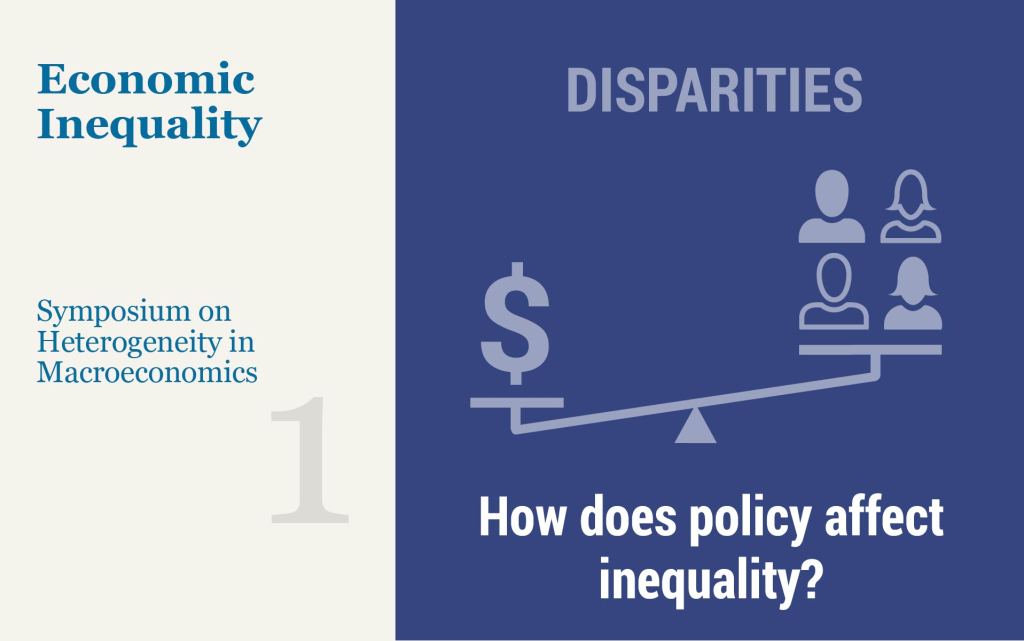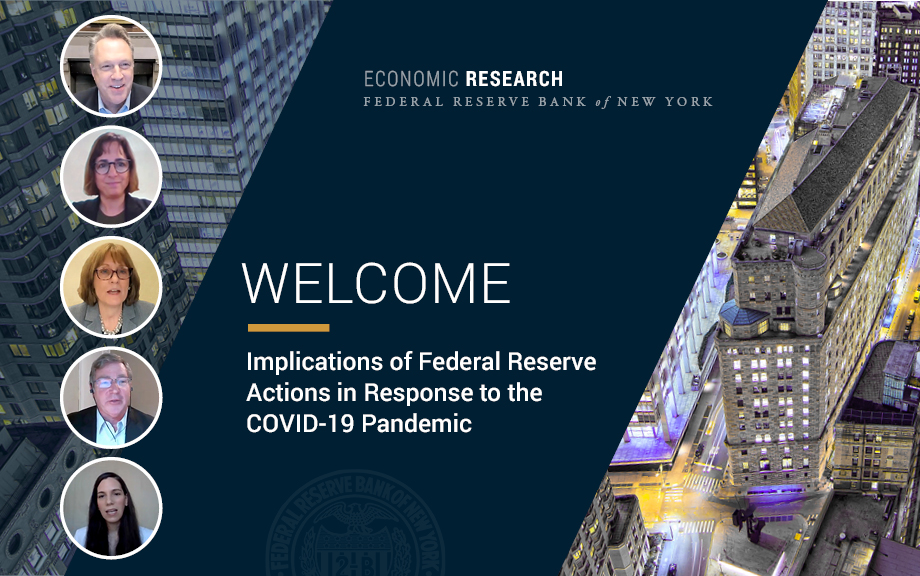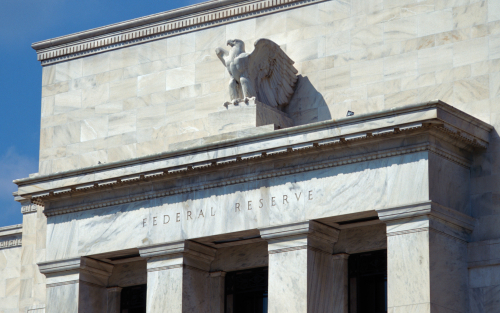The Effect of Monetary and Fiscal Policy on Inequality

How does accounting for households’ heterogeneity—and in particular inequality in income and wealth—change our approach to macroeconomics? What are the effects of monetary and fiscal policy on inequality, and what did we learn in this regard from the COVID-19 pandemic? What are the implications of inequality for the transmission of monetary policy, and its ability to stabilize the economy? These are some of the questions that were debated at a recent symposium on “Heterogeneity in Macroeconomics: Implications for Policy” organized by the new Applied Macroeconomics and Econometrics Center (AMEC) of the New York Fed on November 12.
The Term Spread as a Predictor of Financial Instability

The term spread is the difference between interest rates on short- and long-dated government securities. It is often referred to as a predictor of the business cycle. In particular, inversions of the yield curve—a negative term spread—are considered an early warning sign. Such inversions typically receive a lot of attention in policy debates when they […]
At the New York Fed: Implications of Federal Reserve Actions in Response to the COVID‑19 Pandemic

On September 30 and October 1, 2021, the New York Fed held a virtual conference on the implications of the Fed’s actions in response to the COVID-19 pandemic. New York Fed President John Williams gave the opening and concluding remarks.
The Housing Boom and the Decline in Mortgage Rates

During the pandemic, national home values and housing activity soared as mortgage rates declined to historic lows. Under the canonical “user cost” house price model, home values are held to be very sensitive to interest rates, especially at low interest rate levels. A calibration of this model can account for the house price boom with the observed decline in interest rates. But empirically, we find that home values are nowhere near as sensitive to interest rates as the user cost model predicts. This lower sensitivity is also found in prior economic research. Thus, the historical experience suggests that lower interest rates can only account for a tiny fraction of the pandemic house price boom. Instead, we find more scope for lower interest rates to explain the rise in housing activity, both sales and construction.
How Does U.S. Monetary Policy Affect Emerging Market Economies?

The question of how U.S. monetary policy affects foreign economies has received renewed interest in recent years. The bulk of the empirical evidence points to sizable effects, especially on emerging market economies (EMEs). A key theme in the literature is that these spillovers operate largely through financial channels—that is, the effects of a U.S. policy tightening manifest themselves abroad via declines in international risky asset prices, tighter financial conditions, and capital outflows. This so-called Global Financial Cycle has been shown to affect EMEs more forcefully than advanced economies. It is because higher U.S. policy rates have a disproportionately larger impact on rates in EMEs. In our recent research, we develop a model with cross-border financial linkages that provides theoretical foundations for these empirical findings. In this Liberty Street Economics post, we use the model to illustrate the spillovers from a tightening of U.S. monetary policy on credit spreads and on the uncovered interest rate parity (UIP) premium in EMEs with dollar-denominated debt.
The New York Fed DSGE Model Forecast—March 2021
This post presents an update of the economic forecasts generated by the Federal Reserve Bank of New York’s dynamic stochastic general equilibrium (DSGE) model. The model projects solid growth over the next two years, with core inflation slowly rising toward 2 percent. Uncertainty for both output and inflation forecasts remains large.
Up on Main Street

The Main Street Lending Program was the last of the facilities launched by the Fed and Treasury to support the flow of credit during the COVID-19 pandemic of 2020-21. The others primarily targeted Wall Street borrowers; Main Street was for smaller firms that rely more on banks for credit. It was a complicated program that worked by purchasing loans and sharing risk with lenders. Despite its delayed launch, Main Street purchased more debt than any other facility and was accelerating when it closed in January 2021. This post first locates Main Street in the constellation of COVID-19 credit programs, then looks in detail at its design and usage with an eye toward any future programs.
The International Spillover of U.S. Monetary Policy via Global Production Linkages

Julian di Giovanni describes work with Galina Hale that employs an empirical framework to quantify the role of the global production network in transmitting U.S. monetary policy across international stock markets.
How Did Market Perceptions of the FOMC’s Reaction Function Change after the Fed’s Framework Review?
Should Emerging Economies Embrace Quantitative Easing during the Pandemic?

Emerging economies are fighting COVID-19 and the economic sudden stop imposed by lockdown policies. Even before COVID-19 took root in emerging economies, however, investors had already started to flee these markets–to a much greater extent than they had at the onset of the 2008 global financial crisis (IMF, 2020; World Bank, 2020). Such sudden stops in capital flows can cause significant drops in economic activity, with recoveries that can take several years to complete (Benigno et al. 2020). Unfortunately, austerity and currency depreciations as enacted during the global financial crisis won’t mitigate this double whammy of capital outflows and policies to cope with the pandemic. We argue that purchases of local currency government bonds could be a viable option for credible emerging market central banks to support macroeconomic policy goals in these circumstances.











 RSS Feed
RSS Feed Follow Liberty Street Economics
Follow Liberty Street Economics